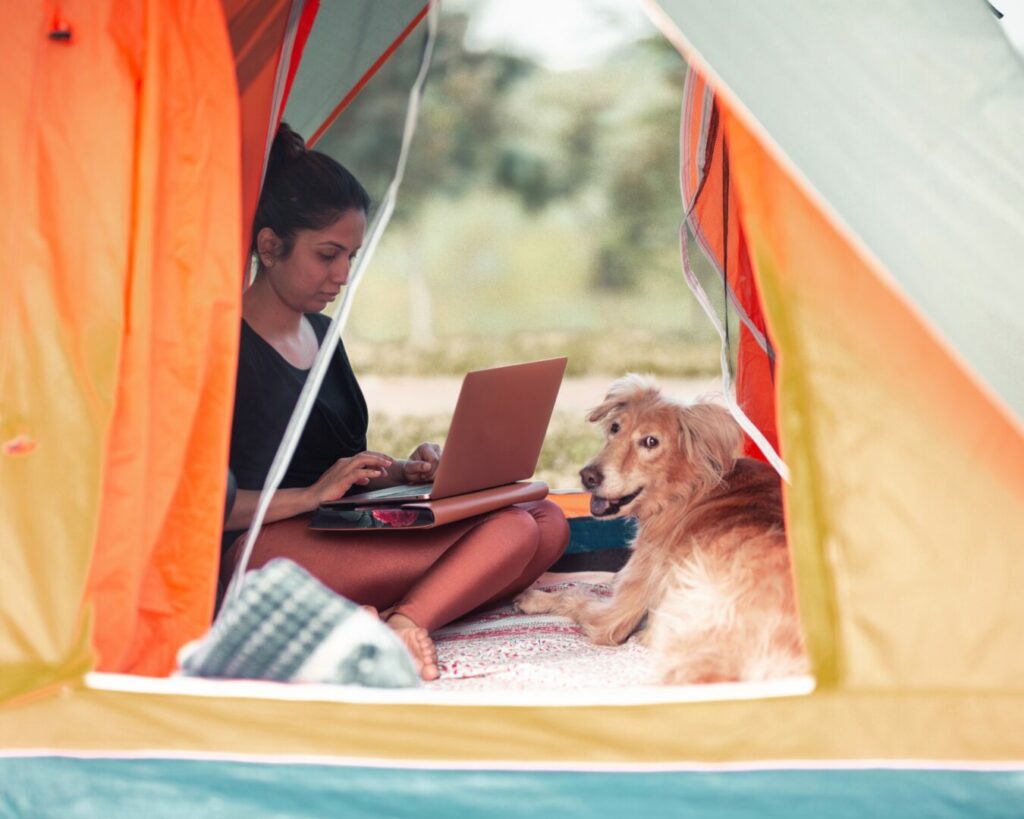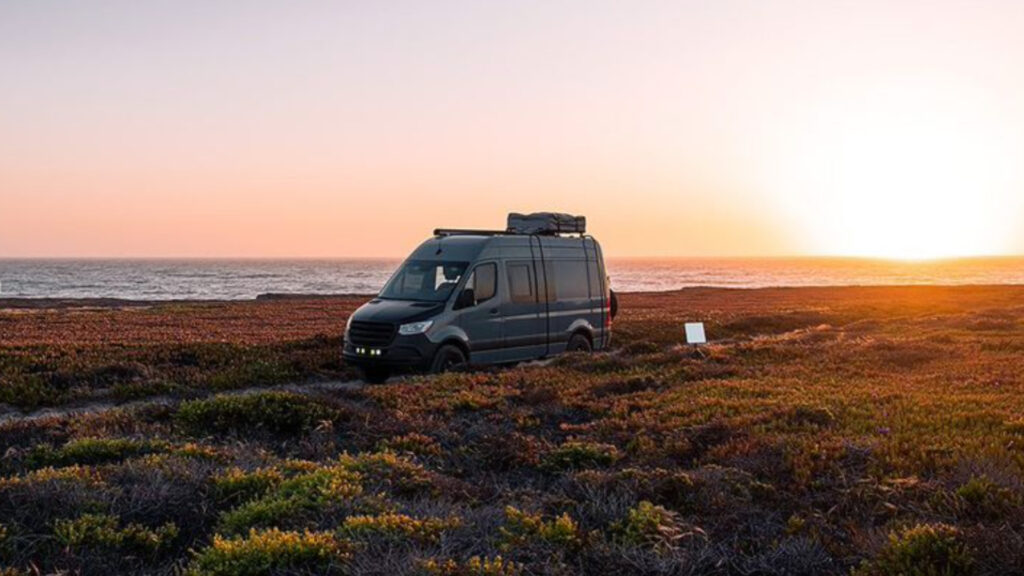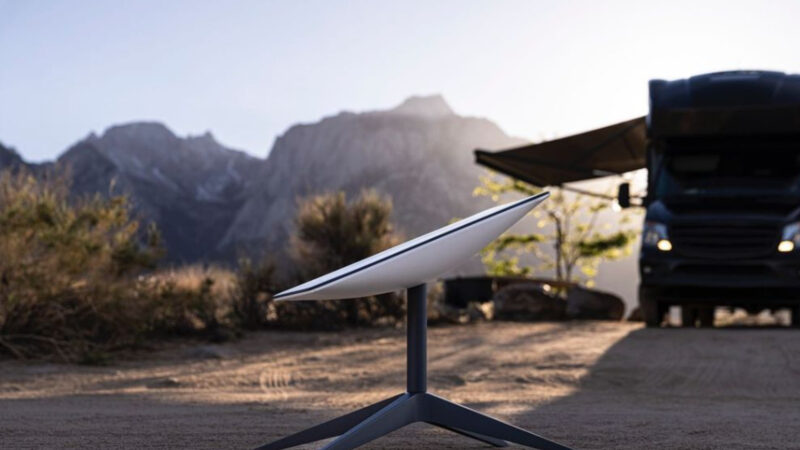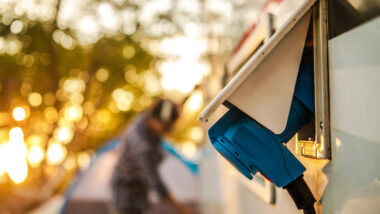Table of Contents Show
In January 2015, Elon Musk of SpaceX announced a plan to develop a constellation of satellites for global communication. In 2017, the first two satellites were used in ground testing. Two years later, SpaceX successfully launched the first 60 production design satellites, which was the first Starlink mission. And as of July 2022, over 2,500 Starlink satellites are now in low Earth orbit. That seemingly opened up more Starlink RV opportunities.
Starlink’s capability to help rural customers and mobile customers connect to high-speed internet is intriguing for RVers. But is it the best internet solution for life on the road? Let’s look at three traveling families and their reviews of Starlink RV internet. Will you be joining the craze after hearing what they have to say?
How Do RVers Get Internet on the Road?
There are a few options for RVers who need internet on the road. The best tactic is redundancy. Having a couple of options is always better than only having one. Depending on location, one provider might work better than another.
Many RVers use cellular providers to get their internet. T-Mobile, Verizon, and AT&T offer unlimited plans or data-only plans. Whether through a hot spot or a cell phone, RVers can connect to a device and have internet capabilities to work and stream.
Another option for internet is through a satellite service. Viasat, HughesNet, and Starlink are the most popular options. While Viasat and HughesNet operate mostly in rural communities where cellular service is minimal, Starlink has burst onto the scene as a viable option for travelers.

What Is Starlink RV Internet?
With a one-time hardware fee of $599 and a monthly fee of $139, RVers can get Starlink for mobile internet capabilities. When the satellites can send a strong signal, the internet speed is high and the latency is low, which is ideal conditions for remote workers.
When you order a Starlink kit, it comes pre-connected with everything you need to access the internet. Once you download the Starlink app and place the receiver where it has a clear view of the sky, you can start receiving a signal. The satellite in space transmits a signal to your satellite dish. Since the satellites are closer to Earth, the latency is much lower than other satellite providers.
The biggest con to using Starlink is the obstructions many RVers have when camping. State parks and campgrounds are full of trees. If the dish can’t get a strong signal, Starlink won’t be effective. The coverage is also spotty. As Starlink launches more satellites into space, the coverage will increase, but this will take time.
Keep in Mind: Are there state parks that are Better Than National Parks? Let’s take a look!

What RVers Really Think About Starlink for RVs
Lots of RVers have ordered Starlink RV internet and have been using it for months. A few are very positive about the progress and future outlook, but most agree that Starlink isn’t going to be replacing other internet providers RVers use any time soon.
Keep Your Daydream
Marc and Tricia Leach of Keep Your Daydream have been RVing for years. Their YouTube channel equips new RVers to get on the road while providing travel tips and gear reviews. Over the last seven years, Keep Your Daydream has received over 476,000 subscribers.
In their Starlink review video, Marc gives his opinion. Overall, he’s very happy with the product and believes it’s worth the $139/month fee. However, his biggest takeaway is that Starlink isn’t going to replace their other internet providers. Starlink RV internet just isn’t at a place where it can be the sole internet provider for travelers because of the connectivity issues.
On the east coast, where most Americans live, there are so many users and much more tree coverage. The internet gets bogged down and mobile internet users are not the priority. The connectivity is better out West, where there are fewer trees and people. So, in the end, Marc suggests that RVers keep what they have and enjoy using the high-speed Starlink internet when the connection is strong.
Irene Iron Travels
Chris and Aaron are Irene Iron Travels, a traveling couple that runs a fitness and nutrition coaching business. Their channel has received over 35,500 subscribers in the last five years. After having Starlink for a month in three different locations, Aaron reviews the Starlink RV internet. In the first and third locations, he was in a wooded area and experienced lots of interruptions due to the trees. With light use, general internet use was fine, but Zoom calls were almost impossible. In the third location, the service wasn’t even usable.
In the Orlando area, the campground had good cell service, but cell tower congestion meant internet connection was rough during the high-use time in the middle of the day. Aaron picked out a campsite with no trees and had zero obstructions. Starlink worked well here, even though the speeds were slower than typical Starlink internet speeds. It was still much faster than cellular internet service.
Aaron concludes that even with the obstructions and problems in some locations, he still believes Starlink RV internet is worth it. They travel full-time and need consistent internet for the road, so Starlink offers another option for connectivity.
Keep in Mind: If Starlink isn’t the right internet provider for you, take a look at how we stay connected on the road!
Grateful Glamper
Grateful Glamper is a full-time traveling family seeking freedom from time and location. Ben, Charity, Dakota, and Trinity inspire others to join them in living the life they’ve always wanted. Over the last few years, their YouTube channel has received over 85,000 subscribers who tune in to learn more about RV life.
They’ve been testing Starlink for about four months, and Charity gave her review of the service so far. Their Starlink dish actually blew off the roof, so they decided to attach the receiver to a flag pole to prevent this from happening again. Thankfully, nothing happened to the dish. Charity shares similar sentiments as Marc and Aaron: Starlink RV internet may end up being the all-in-one internet service provider RVers need, but it’s not there yet. Right now, they’re sticking with redundancy and having multiple options so they can work and play from the road wherever they are.
Is Starlink RV Internet the Best Solution?
The best solution for RV internet isn’t one solution. Instead, it’s having multiple options so you can use what works best in any given location. While in the Florida Keys, Charity from Grateful Glamper said Verizon was non-existent, but T-Mobile worked well. While in Orlando, Aaron from Irene Iron Travels said Starlink was better because of the cell tower congestion. So having as many options as you can afford is the best RV internet solution.
How do you get internet on the road? Will you be adding Starlink to your internet arsenal?







WARNING: Do NOT attach your Starlink antenna to a flagpole, or any other metal structure. That would be called a LIGHTNING ROD.
Nobody discussed the impact that Starlink could have on the skies when/if Elon Musk achieves his goal of 10’s of 1000’s of satellites in low earth orbit crashing into other satellites or space stations. I view it as another form of pollution
The wife and I are retiring at the end of this year and planning to do some RV traveling. I am researching the challenges we will face and internet access will be one of them. As I work in the IT profession now (Network & Infrastructure) I very much appreciate your candid review and comments. Although I cannot contribute to this topic yet, I hope to in the future.